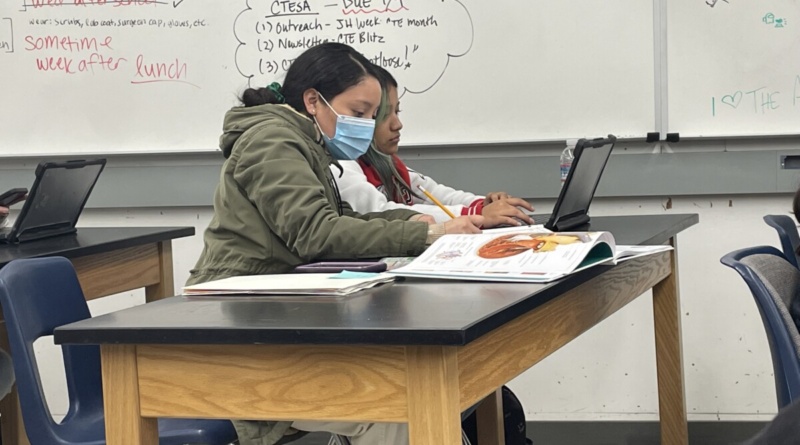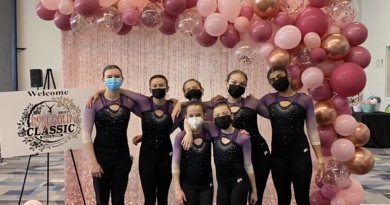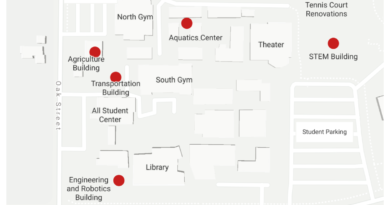Paraeducators want success for English learner students
PHOTO: Bilingual student (Katherine Lara Torres) and UCD tutor (Mayvelin Orozco) work together to translate a Biomed assignment on brain injury.
By Lauren Cornell
BlueDevilHUB.com Staff––
District officials feel the support provided for English learner (EL) students right now allows them to succeed. Davis High paraeducators and EL students feel differently.
With more than 90 English learners at Davis High and 750 total in the Davis Joint Unified School District (DJUSD), there are special programs and accommodations made available to these students to help them best succeed academically. Bilingual paraeducators are one of these supports.
Paulette Alvarez is one of the two bilingual paraeducators who work at DHS. She is assigned to certain classes each year and supports the EL students in those classes. “It is important to build connections with students because this allows the students to feel comfortable asking questions and asking for help,” Alvarez said.
Bilingual paraeducators are assigned to “mainstream” classes, to help “bridge the curriculum and the language for students,” said Ricardo Perez, Director of English learner, Immersion and World Language Programs for DJUSD. Bilingual para-educators can help all English learners but are specially equipped to help Spanish-speaking students at DHS.
The department of professional development is working to better equip teachers to help with EL students. “We want to remind teachers that we are all educators of EL students,” Perez said. Along with equipping teachers with multilingual support strategies, the District strives to train paraeducators to better assist EL students.
“Strategies used to help English learners, helps all students,” said Melody Ewey, a teacher on special assignment to work with the secondary English learner program.
EL students are categorized by their level of English proficiency. Level one students are newcomers, students who recently moved to an English-speaking school. Level two and three students are students who have an intermediate understanding of English.
Students who are English learners are grouped with other EL students in regular classes. The class and group of students are assigned one of the two bilingual paraeducators at DHS, in order for them to succeed in the class. “Multilingual students are just the same as everyone else, except they are learning a new language. They want to make friends, build friendships and relationships, and want to succeed,” Alvarez said.
While there are many support systems in place in school for EL students, some paraeducators and students feel more could be done to the benefit of students.
Being in a class and not understanding the language being spoken along with the overload of work is proving difficult for students whose first language is not English. “I mute myself when I’m placed in a group because I don’t know what to say,” said William Santizo, an EL student at DHS.
Santizo struggles to connect with his peers and the community at school because of the language barrier. “My biggest challenge is peer communication,” Santizo said.
Abel Unzueta, a paraeducator at DHS who speaks Spanish, feels like the school could be doing more to create a better connection between the EL students and the school community to help them better succeed. “The language barrier is a setback for most students,” Unzueta said.
Santizo and Unzueta wish for more support for multilingual students to help them better succeed academically and socially. Unzueta thinks that having more bilingual paraeducators would be a huge help to the students that struggle with the language barrier.
“Additional support would be helpful, (because) it is very difficult to communicate with my peers when I don’t speak English,” Santizo said.




